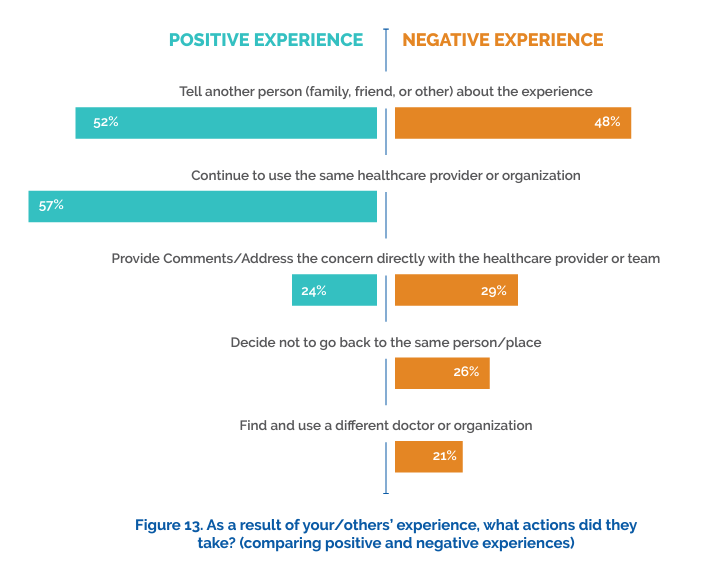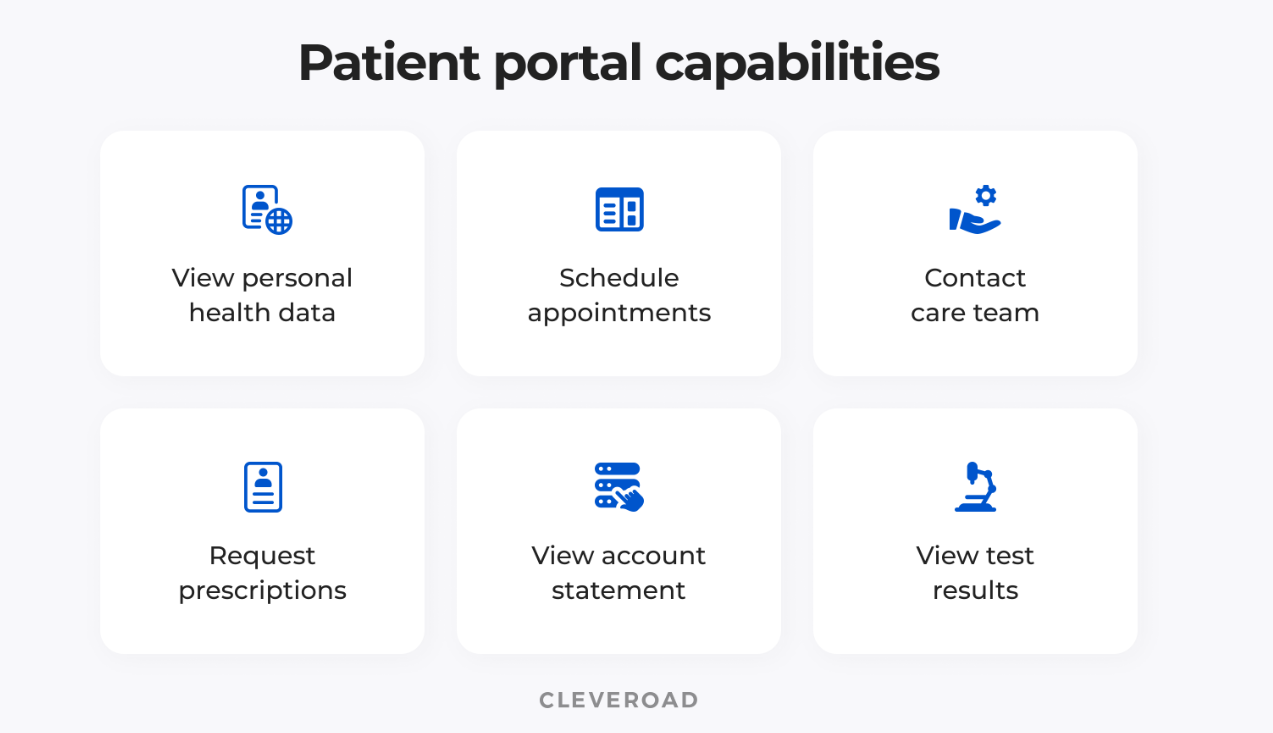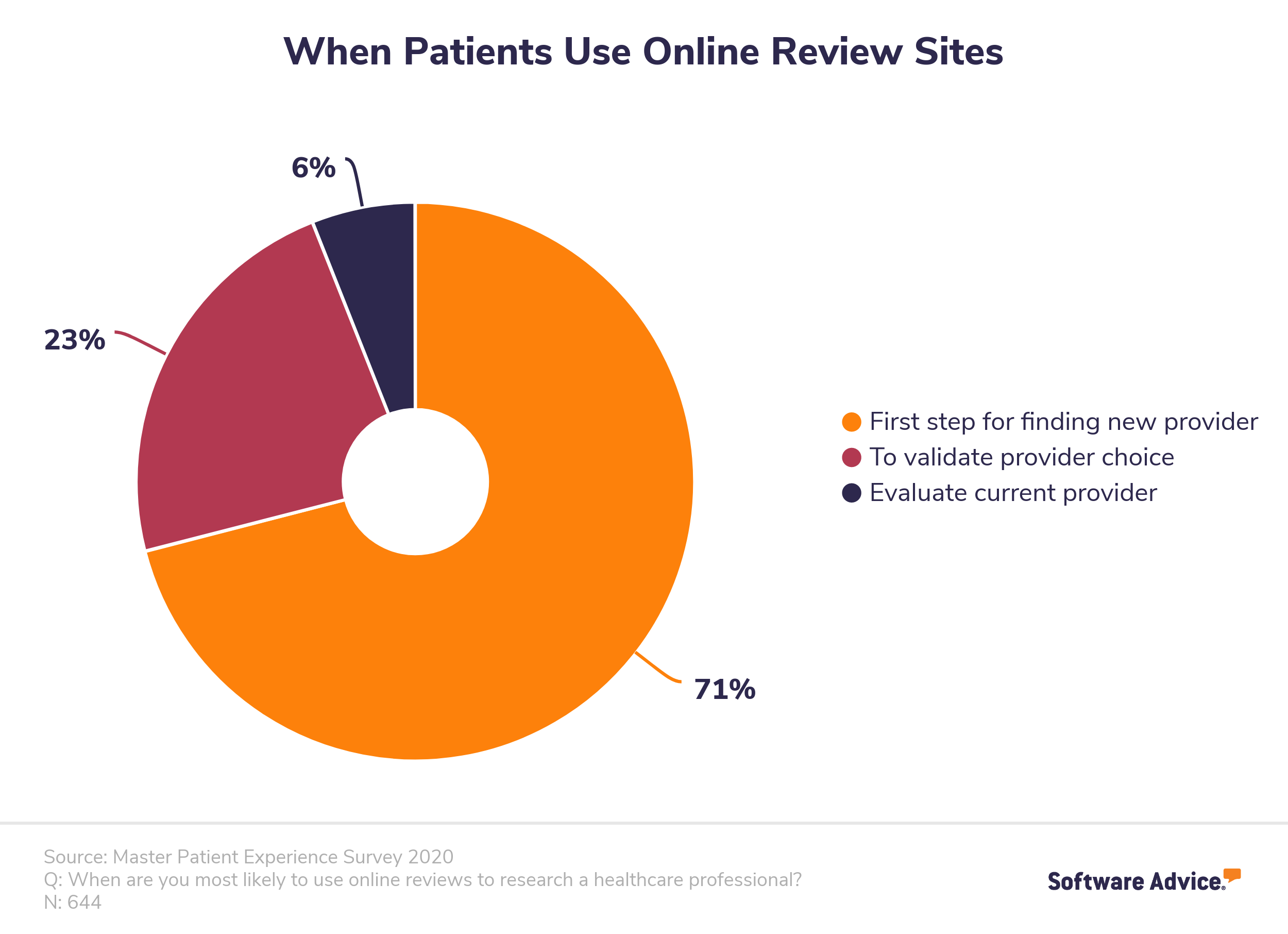In the past, healthcare was a physician-focused market where providers can maintain profitable patient volumes just by having the ability to provide care. In addition, healthcare marketers could get away with one-size-fits-all traditional advertising methods like TV, print, referrals, etc. Stakeholders were siloed in their specific roles, which cultivated gaps in communication and care, leading to a frustrated patient population.
Table of Contents
But with the newest paradigm, the focus has shifted from physicians and stakeholders to the patients themselves–right smack in the center of the care team are the patients. Modern consumers, especially younger generations, are empowered to take control of their healthcare journey. So they’re asking questions, raising concerns, researching their options, and making their own medical decisions. This evolution in healthcare is referred to as “patient centricity.”
In a market where consumers are increasingly more empowered, physicians and care providers must appropriate a wide array of patient-centric marketing strategies to stay competitive in these emerging trends.
What is Patient-Centric Marketing?
Patient-centered care, aka value-based care, is about transforming the patient-physician relationship from the traditional all-encompassing (same treatment for similar medical conditions) to individualized care. Patient-centricity fosters individualized healthcare based on a patient’s unique medical needs, preferences, lifestyle, and background. Improved patient outcomes and the cultivation of trust and loyalty within patient-provider relationships support this emerging trend’s popularity.
Hence, physicians and other healthcare providers that want a more patient-centric care method must also update their marketing strategies to align with this shift.
Deloitte Insights predict that by 2040, patients will have the final say regarding the who, when, and where of their healthcare journeys–not providers or health plans. It’s loud and clear; patients want to participate in healthcare decision-making.
Traditionally, care providers have increased their patient volume through referrals and marketing to those referral sources. With healthcare’s pivotal shift towards consumerization, healthcare, and life sciences organizations must focus their marketing efforts toward the patients. This requires them to know and understand the patient’s unique medical needs, preferences, motivations, challenges, etc.
In other words, your marketing strategy must include patient perspectives and address what matters to them. Thankfully, digital solutions help healthcare organizations engage with patients and provide them with actionable insights.
What are the Advantages of Patient-Centric Marketing?
Why should your healthcare organization adopt patient-centricity in marketing? Below are the benefits you can look forward to in patient-centric marketing.
Drives Patient Engagement
As mentioned, patients are more informed and empowered to take the reins of their healthcare journey, thanks to the internet and social media. It’s no coincidence that 90% of Americans turn to social media and other web sources for healthcare-related information and not their primary care doctor. This trend is significantly more prevalent with Millennials and Gen-Z patients. Since patients can now research their health conditions, treatments, and providers, healthcare companies must build trust and credibility toward their brands by offering valuable content.
Enter patient-centric marketing.
Patient-centricity uses marketing tactics that aim to educate patients, leading to better engagement. Instead of hard selling, like talking about general medical services or products, this type of marketing offers educational content like information about specific illnesses or ways how to manage certain conditions. As such, healthcare groups provide real-world content, while patients feel like they learned something and are satisfied with the interaction. Engaged visitors are more likely to trust your brand and convert.
Develop a Holistic Patient Profile
Understanding the patient’s needs, motivations, and challenges is one of the core pillars of patient-centric marketing. With traditional marketing strategies, medical organizations have difficulty understanding the unique patient touchpoints within the healthcare system. Meanwhile, patient-centric marketing powered by digital marketing technology gives your organization access to actionable patient and provider insights via website usage, social media, reviews, etc.
As a result, you’ll have created a holistic picture of your ideal patients, which you can incorporate with your marketing campaign to provide personalized experiences. This is relevant because with the advent of healthcare consumerization comes a massive shift in patient expectations as well. About three quarters of U.S. consumers expect their healthcare experiences to be more personalized and seamless.
With patient-centricity, you’ll have a complete picture of the patient’s health, including risk factors, medical history, etc., improving patient outcomes.
Personalization in Healthcare
Patients are frustrated with the rising cost of healthcare and out-of-pocket payments. As a result, they are more careful about how and where they spend their money in the healthcare space. Hence, the one-size-fits-all marketing approach won’t cut it anymore, especially in the increasingly saturated market. If you want to stand out from the competition, you should leverage patient-centric marketing to offer personalized experiences to patients.
Indeed, personalization has been proven to improve healthcare as we know it drastically. Thanks to technology, data, and analytics advancements, personalized experiences are now the norm with companies like Amazon, Starbucks, and Netflix.
In terms of healthcare, a personalized experience means being treated as unique individuals with unique medical histories and circumstances. With patient-centricity front and center, you can provide relevant, hassle-free patient experiences and manifest better health outcomes. When properly implemented, personalization can help you reshape every step of the healthcare journey–from choosing a physician to health plan renewal.
Increased Patient Retention
Meeting patients where they are in their journey helps build trust and confidence in your brand. Engagement and trust will keep patients in your system, and they become valuable marketing tools as they refer your practice to family and friends. The Beryl Institute finds that 70% of happy patients will share their positive experiences with others.
As mentioned, patient-centric marketing increases your chances of providing the best experiences possible–retaining existing patients and turning them into brand advocates. Keep in mind that patient retention is six or seven times more expensive than acquiring new ones. Therefore, it’s more than worth focusing on retention with customer-centric practices.

Workforce Optimization
With the demand for higher-quality and personalized care looming over their heads, healthcare professionals are reeling from severe burnout. Many healthcare systems ran on fumes during and after the pandemic, with staff shortages and decreased hiring budgets. In many ways, patient-centric marketing powered by virtual tools can optimize the workforce by streamlining working operations and eliminating inefficiencies.
For example, digital tools like patient portals and AI chatbots can significantly streamline care management and free precious time for providers and care teams. At the same time, these tools provide unique opportunities to bolster patient satisfaction by improving the communication lines between your team while minimizing phone call volumes.
Patient-centric marketing lessens the burden on your healthcare team, preventing burnout and avoiding the need to hire more employees.
Tips and Strategies for Patient-Centric Marketing
How do you make your marketing campaign more patient-centric? Outlined below are some tips and strategies you should know.
1. Build a User-Centric Website
Patient centricity is about offering comfortable experiences to your target audience. With that said, what’s a better way to showcase patient-centricity than your digital front door, your website? Here are several web design best practices to improve the user experience:
- Straightforward and easy navigation: Your website must be easy to navigate with clear layouts, intuitive menus, and organized content. The idea is to provide a straightforward experience for visitors where they can easily find what they’re looking for, including your crucial content like blog articles and service pages.
- Streamlined content: Remember that you’re catering your website to the patient population. They already find health care complex and intimidating, so streamline your messaging and avoid jargon and technical terms. Also, make your content easy to read with headers, bullet points, and images.
- Professional visual design: Use professional images, graphics, and videos throughout your website. In addition, use easy-to-read fonts and colors that complement your brand. High-quality web design is one of the best ways to make a lasting first impression among visitors.
- Fast-loading pages: Visitors expect your website to load quickly; otherwise, they will leave quickly. Thus, ensure your web pages are optimized for speed by using compressed images, choosing a reliable host, and minimizing the use of plugins. Use PageSpeed Insights to evaluate the speed of all your web pages.
- Mobile-friendliness: More than half of all internet traffic is from mobile devices, so ensure that your website uses responsive design so it loads correctly on desktop and mobile.
2. Leverage High-Quality Content
One of the most important elements of patient-centric marketing is content. With healthcare consumerization in full swing, the importance of serving high-quality personalized content can’t be understated. Having said that, focus your efforts on crafting highly-engaging MD profiles and treatment programs.
With a website redesign, it’s a good idea to revisit your physician profiles, service pages, and treatment programs and revitalize them with more engaging content. As such, you should always provide practical, engaging information to provide real-world value to patients. More than that, high-quality, valuable content will also improve your SEO rankings–thanks to Google’s recent Helpful Content Update.
The Helpful Content Update puts more emphasis on content quality and authenticity. This can be challenging for many healthcare providers since many don’t exactly focus on content creation. However, if you want to adopt a more patient-centric approach, value-based content must be based on an intimate understanding of your target patient’s needs. At the end of the day, it’s about delivering valuable content that matters to your patients.
3. Implement Patient Portals
In order to achieve patient-centered care, you must offer patients timely, accurate, and personalized medical information. This goal can be supported by implementing patient portals in your health system. Online patient portals enable patients to access healthcare information, request prescriptions, and communicate with providers without in-office visits or phone calls. As you might expect, portals give patients easy access to electronically stored and personalized medical information, which can significantly transform health outcomes.
This relates to patient-centricity because research shows that when people can see their health information, they take ownership of their health and wellness and will be more comfortable interacting with providers.
On top of that, patient portals are an excellent channel for personalized marketing because they allow you to push only the most relevant content to individuals. Based on the data on your CRM database, you can display links to educational articles within the portal about helpful topics like “when should you get your mammogram,” “warning signs of a stroke,” or “when is the best time to get a flu shot.” More evidence shows that web-based patient-provider interactions can improve health outcomes, so ensure you have a patient portal.

4. Hop on to Social Media
Social media networks like Facebook, Instagram, and TikTok aren’t just conduits for digital marketing anymore. Social media has transformed into a powerful tool providers can use to identify, engage, and collaborate with patients. In social media, you can listen to patients and hear about their hopes, dreams, concerns, complaints, and expectations.
When it comes to healthcare, patients and their families want authenticity. By listening to social media and gaining data insights, you’ll better understand the patient’s voice and provide personalized experiences. These tailor-made experiences will help you gain trust and form meaningful relationships with your patients.
Those who fully embrace listening to patients on social media will have clearer pathways toward patient centricity. And once again, yielding the best outcomes and solutions for patients.
5. Generate Patient Reviews and Testimonials
Patient reviews, and testimonials are some of the most valuable sources of truth that can shape your patient-centric campaign. With reviews and testimonials, people explicitly tell you what they like and don’t like about their experiences with your practice. Furthermore, 9 out of 10 patients look at online reviews when evaluating a provider. They’ll look at your practice’s star ratings, comments, and even your responses to reviews to estimate the experience they’ll receive from your organization.
Hence, ensure you have a solid reputation management system for generating patient reviews and testimonials. Train your patient-facing staff members to ask patients for reviews after appointments. Follow-up emails, patient surveys, and SMS can go a long way in collecting reviews. Alternatively, you can invest in review solicitation software like Birdeye and Weave to automate your processes.

Just What the Patient Ordered
Patient centricity is becoming increasingly important in the healthcare industry–it’s here to stay. Focus your marketing efforts around the needs and preferences of your patients, so you can build trust and credibility, differentiate your practice from the competition, and ultimately improve patient outcomes. With beautifully-executed patient-centric marketing, you’ll likely see increased patient volume and revenue.

